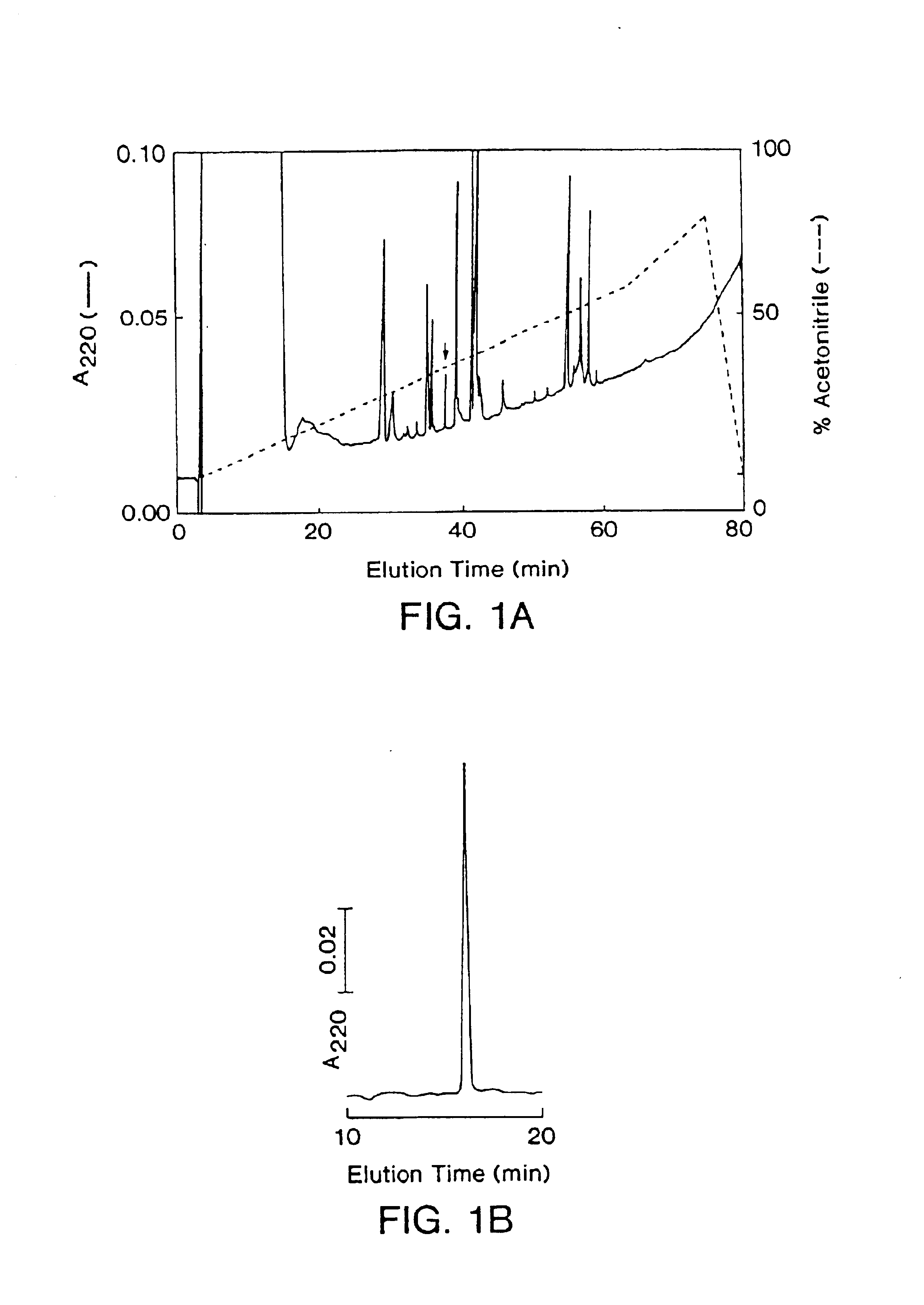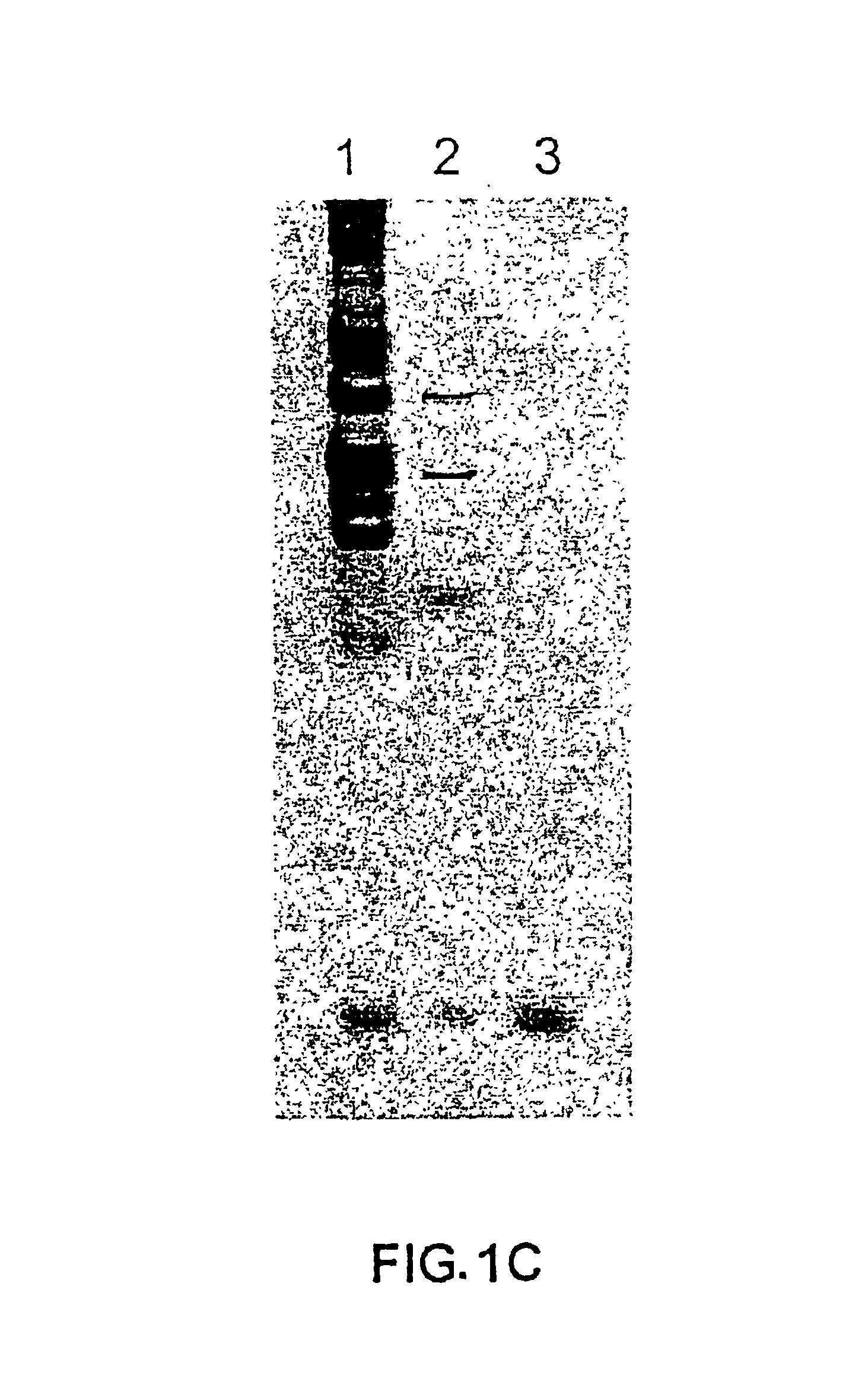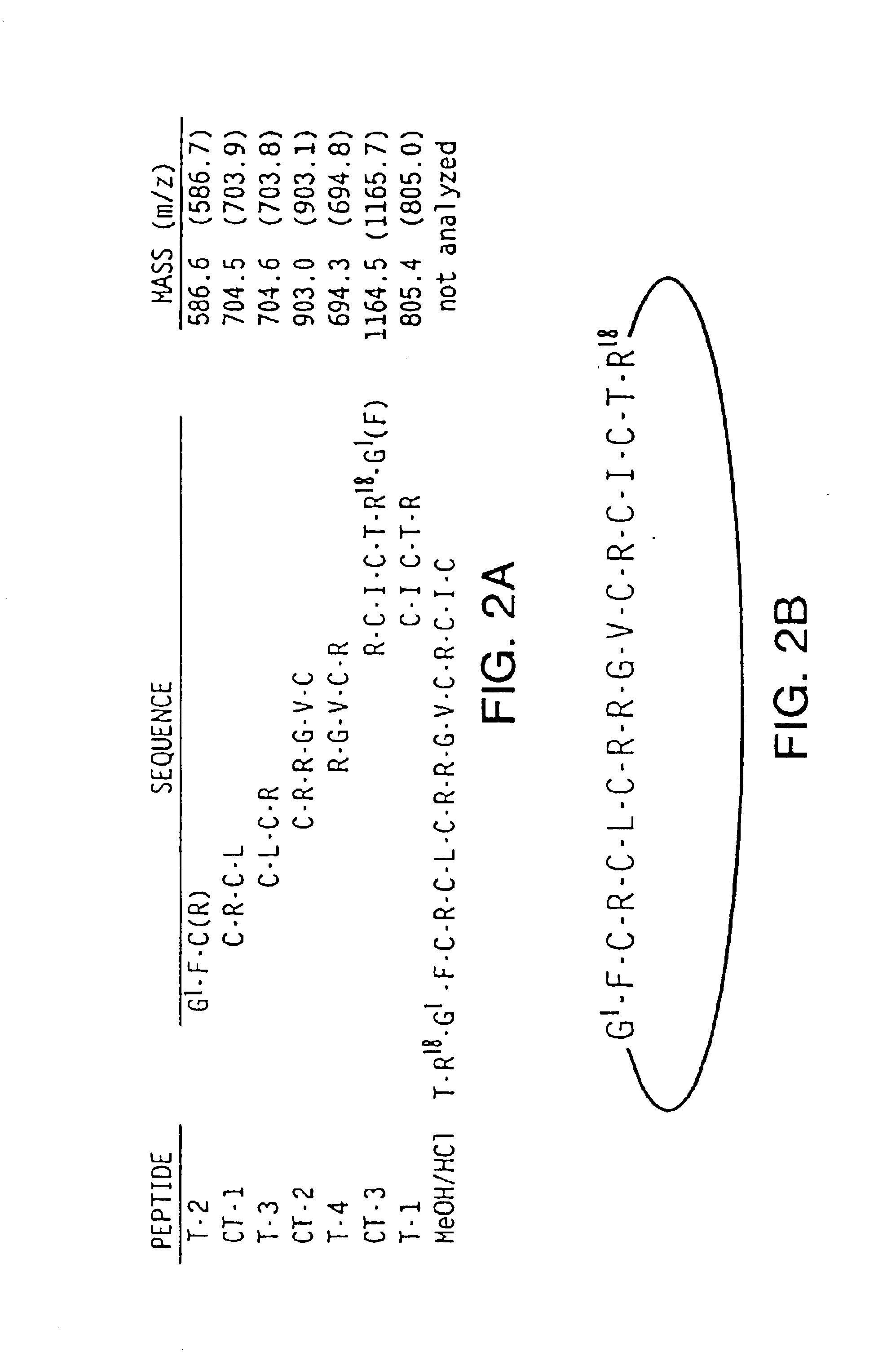Antimicrobial theta defensins and methods of using same
a technology of antimicrobial and theta defensin, which is applied in the field of cyclic theta defensin peptides, can solve the problems of increasing patient suffering, affecting the treatment effect, so as to reduce the severity of the pathologic condition, inhibit the growth or survival of microbial organisms, and reduce the effect of microbial growth or survival
- Summary
- Abstract
- Description
- Claims
- Application Information
AI Technical Summary
Benefits of technology
Problems solved by technology
Method used
Image
Examples
example i
Preparation and Characterization of Theta Defensin
[0089]This example provides methods for purifying and characterizing a cyclic theta defensin.
[0090]Native theta defensin was purified from Rhesus macaque peripheral leukocytes. Briefly, leukocytes were obtained from anticoagulated whole blood of adult rhesus macaques after erythrocytes were depleted by dextran sedimentation. The cell pellet (6×106 cells; 91% neutrophils, 5% mononuclear cells, 4% eosinophils) was snap frozen, suspended in 0.5 ml ice cold 30% acetic acid and stirred on melting ice for 18 h. The suspension was clarified by centrifugation at 4° C., the supernatant was lyophilized, and then dissolved in 0.5 ml methanol-water (80:20). After 6-8 h of stirring at 8° C., the sample was clarified by centrifugation and the supernatant was lyophilized. The dry powder was dissolved in 0.5 ml 5% acetic acid prior to RP-HPLC.
[0091]Rhesus theta defensin-1 (RTD-1) was isolated during studies to characterize defensins of rhesus macaqu...
example ii
Solid Phase Synthesis of Theta Defensin
[0105]This example describes chemical synthesis of theta defensin.
[0106]A synthetic version of RTD-1 was produced by solid phase synthesis. Inspection of the theta defensin disulfide motif suggested that assembly of a linear 18-mer in which Gly1 was placed at the amino terminus (see FIG. 4) would both facilitate disulfide-bond formation and proximate positioning of the amino and carboxyl termini for cyclization. A linear version of RTD-1 was assembled using Fmoc chemistry, cleaved, deprotected, and the reduced peptide was purified by RP-HPLC at pH 2.1. A schematic of the synthesis is shown in FIG. 6A.
[0107]The linear peptide chain of the monkey peptide was assembled on PEG-PS resin at 0.2 mmol scale on a Millipore 9050 Plus continuous-flow peptide synthesizer (Millipore; Bedford Mass.). Fmoc-chemistry was utilized and the following protecting groups were employed: Arg(Pbf) (2,2,4,6,7-pentamethyldihydrobenzofuran-5-sulfonyl); Cys(Trt) (trityl or...
example iii
Antimicrobial Activity of Theta Defensin
[0114]This example demonstrates that theta defensin exhibits broad spectrum antimicrobial activity.
[0115]Agar diffusion assays and microbicidal suspension assays were used to examine the activity of theta defensin against Staphylococcus aureus 502A, Escherichia coli ML35, Listeria monocytogenes, and Cryptococcus neoformans. For agar diffusion assays, theta defensin activity was determined at concentrations 10, 30, 100 or 300 μg / ml in agar plates seeded with 1×106 colony forming units of each microorganism. theta defensin demonstrated a dose dependent increase in the zone of inhibition for each of the microorganisms examined (see FIG. 7).
[0116]The in vitro antimicrobial properties of RTD-1 were further evaluated in microbicidal assays against a panel of bacterial and fungal test organisms. Increasing concentrations of natural and synthetic RTD-1 were incubated with Staphylococcus aureus 502a for 2 h at 37° C. in 10 mM PIPES, pH 7.4 (FIG. 8). Ki...
PUM
| Property | Measurement | Unit |
|---|---|---|
| Fraction | aaaaa | aaaaa |
| Antimicrobial properties | aaaaa | aaaaa |
Abstract
Description
Claims
Application Information
 Login to View More
Login to View More - R&D
- Intellectual Property
- Life Sciences
- Materials
- Tech Scout
- Unparalleled Data Quality
- Higher Quality Content
- 60% Fewer Hallucinations
Browse by: Latest US Patents, China's latest patents, Technical Efficacy Thesaurus, Application Domain, Technology Topic, Popular Technical Reports.
© 2025 PatSnap. All rights reserved.Legal|Privacy policy|Modern Slavery Act Transparency Statement|Sitemap|About US| Contact US: help@patsnap.com



